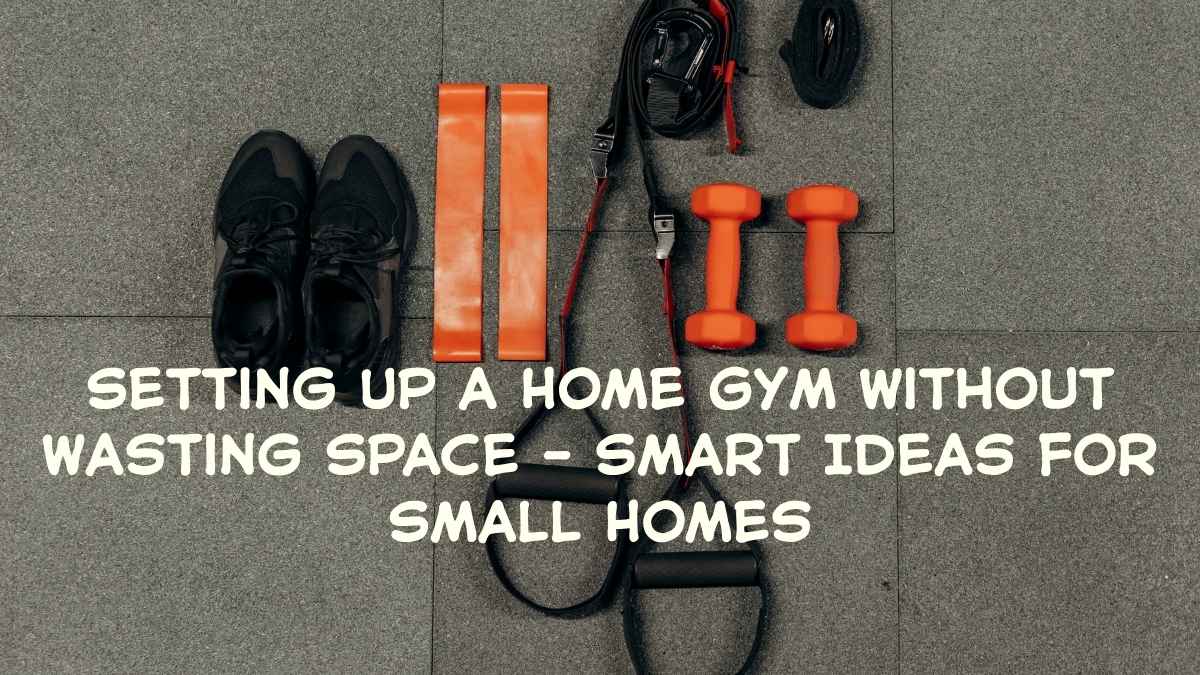Setting Up a Home Gym Without Wasting Space – Smart Ideas for Small Homes
Creating a home gym is a dream for many fitness lovers, but limited space can make it challenging. The good news? You don’t need a huge basement or a spare room to build an effective workout area. With smart planning, multi-purpose equipment, and clever storage, you can design a compact yet fully functional home gym without wasting space that fits perfectly into your home without feeling cramped.
In this guide, we’ll explore space-saving tips, budget-friendly options, and practical setups to help you stay fit without sacrificing your living space.
Smart Ideas for Setting Up a Home Gym Without Wasting Space
1. Choose Multi-Functional Equipment
Instead of bulky machines, invest in multi-purpose fitness gear that can be used for multiple exercises.
- Adjustable Dumbbells – Replace an entire rack of weights.
- Resistance Bands – Easy to store and great for strength training.
- Foldable Treadmills or Bikes – Can be tucked under a bed or sofa.
- Yoga Mat – Works for stretching, bodyweight exercises, and core workouts.
💡 Fact: A single pair of adjustable dumbbells can replace up to 15 regular dumbbells, saving you over 85% space.
2. Use Vertical Space
If floor space is tight, think upwards.
- Install wall-mounted racks for weights, mats, and jump ropes.
- Use hanging hooks for resistance bands and boxing gloves.
- Add shelves for storing towels, water bottles, and workout shoes.
3. Convert Multipurpose Areas
Your gym doesn’t have to be a dedicated room.
- Living Room Corner: Move a coffee table aside for a workout session.
- Bedroom: Keep foldable equipment under the bed.
- Garage or Balcony: Create a semi-outdoor workout space.
4. Invest in Compact Cardio Machines
Cardio is important, but large machines can overwhelm a small room. Look for:
- Under-Desk Ellipticals
- Mini Steppers
- Foldable Rowing Machines
These options give you a great cardio workout without dominating your space.
5. Smart Storage Solutions
A clutter-free gym is a safe and inviting gym.
- Use storage benches to hide smaller gear.
- Store foam rollers and mats in slim vertical holders.
- Choose a rolling storage cart to move your gym essentials wherever needed.
6. Create the Right Atmosphere
Your home gym should motivate you to work out.
- Add a large mirror to make the space feel bigger and help with form checks.
- Use bright lighting for energy.
- Play your favorite music through a Bluetooth speaker for motivation.
7. Keep it Budget-Friendly
You don’t need to spend thousands to create a home gym.
- Check second-hand marketplaces for equipment.
- Start with bodyweight training before buying machines.
- Upgrade gradually as your needs grow.
💡 Fun Fact: Studies show that people with home gyms are 40% more likely to maintain regular workout habits compared to gym members.
Must Read: Kids Room Decor Ideas for a Stylish, Fun, and Functional Space
Conclusion
Creating a home gym in a small space is all about smart planning, multifunctional equipment, and creative storage solutions. You don’t need a large room or an expensive setup to stay fit — a corner of your living room, bedroom, or even balcony can work perfectly. By choosing compact, foldable gear and keeping the area clutter-free, you can create a motivating workout space that fits your lifestyle. With the right setup, your fitness goals can be achieved without stepping outside your home or sacrificing your living space.
FAQs
How much should I budget for a small home gym?
You can start a basic small-space home gym with $100–$300 by choosing affordable, multifunctional equipment like resistance bands, a yoga mat, and adjustable dumbbells.
Can I set up a home gym in a rented apartment?
Yes! Focus on non-permanent solutions like foldable benches, door-mounted pull-up bars, and portable storage racks that won’t damage walls or floors.
How do I make my home gym feel more motivating?
Add good lighting, motivational posters, mirrors, and an upbeat workout playlist to create a positive and energizing environment.
Is it okay to mix cardio and strength equipment in a small space?
Absolutely — just prioritize versatile machines like resistance bands, kettlebells, or a foldable treadmill that can cover both cardio and strength needs.
What’s the best flooring for a small home gym?
Interlocking foam mats or rubber flooring protect your floor from damage, reduce noise, and provide a safer workout surface.








One Comment